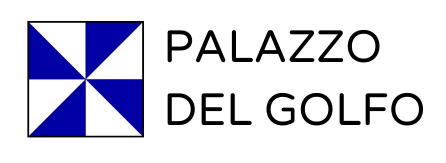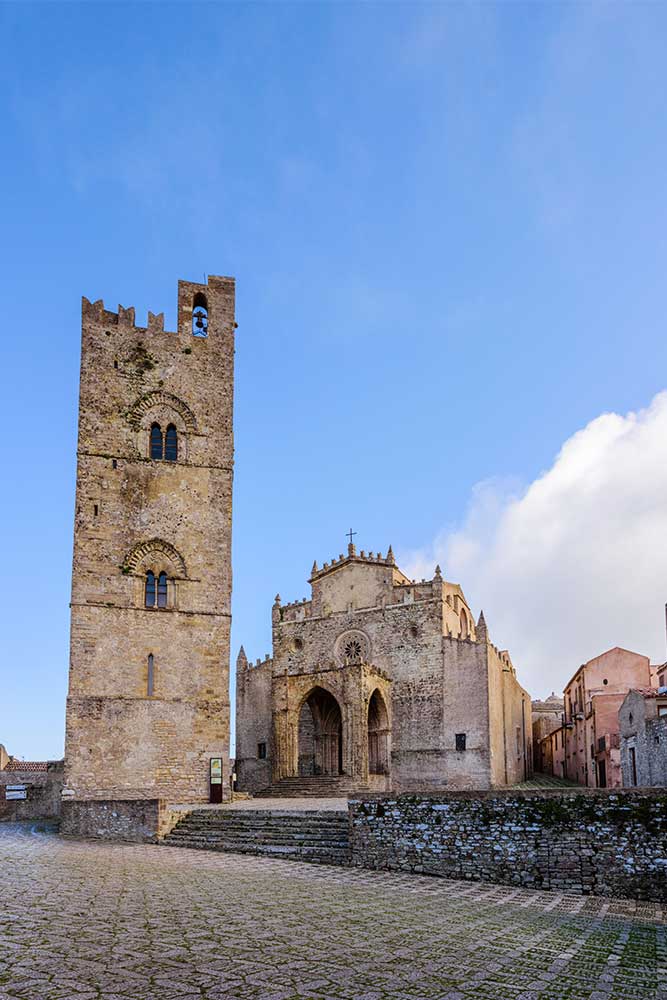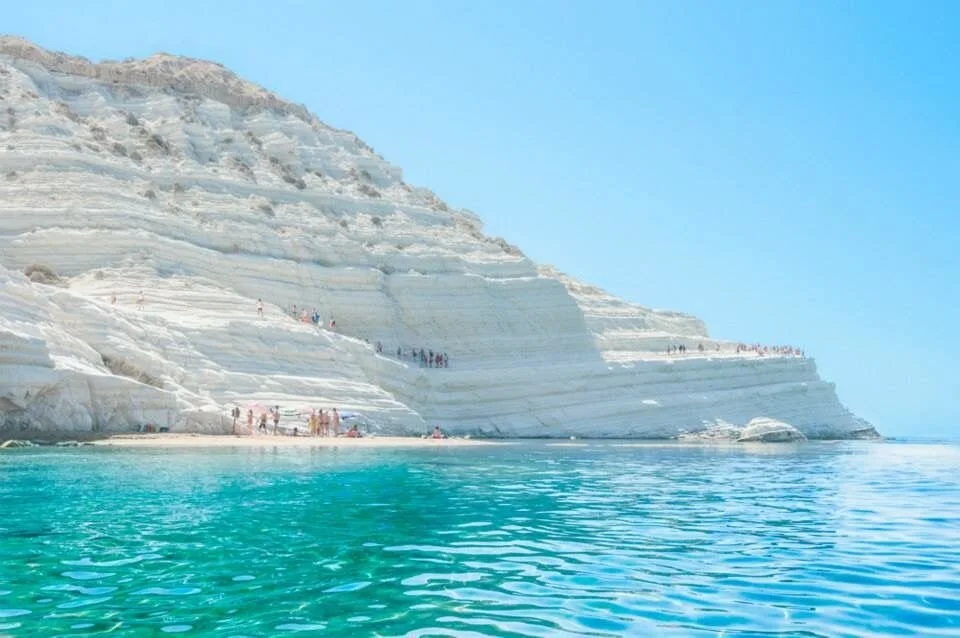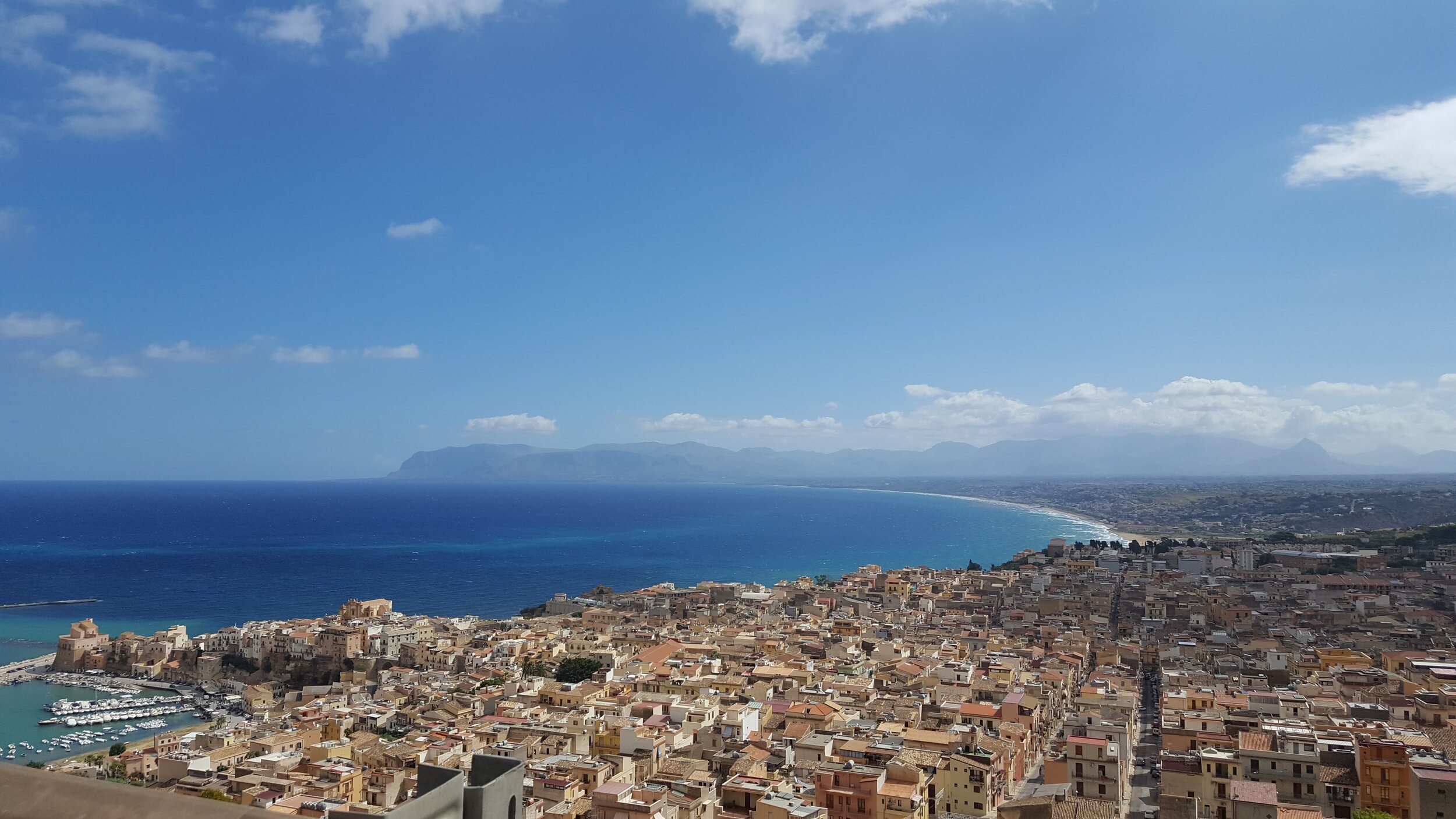Palazzo del Golfo, perfectly positioned in the heart of wondrous Western Sicily, is the perfect launch point to begin your adventure. The center point of a cultural triangle that includes places of rugged natural beauty, history, archaeology, and agrotourism rooted in the essence of Sicilian cuisine.
ERICE
Erice is a magical, perfectly preserved medieval town with stunning views of the sea. The walled city center located on top of Mount Erice. Trojan exiles founded it in ancient times according to the Thucydides, an ancient Greek historian. Famous in both Greek and Roman times, together with Segesta, it was one of the most important cities in the region for many centuries. In addition to its vibrant Greek and Roman history, the village has a concentration of impressive concentration of medieval and renaissance architecture.
Erice is also known for its brightly colored hand-painted ceramics and handwoven geometric rugs. Be sure to stop in and enjoy sweets at a local pasticceria made from recipes of nuns and monks of religious monasteries. At 750 meters above sea level, it can be quite windy, so we recommend bringing a long sleeve shirt or light jacket.
Where it is: Erice, 91016 Province of Trapani, Italy
How to get there: To Erice: 37km/23mi 45 min by car on a main state highway. The last 8km is a windy road. We do not recommend driving at night. Alternatively there is a cable car from the City of Trapani that will take you to Erice in about 10 mins. To Gondola in Trapani 36km/22 mi 45min to Cable car from Trapani to Erice
Castle of Venus, Erice PH: positivitrip
Cathedral of the Assumption and the Bell Tower, Erice ph: positivitrip
CALATAFIMI-SEGESTA
Sicily has a plethora of riches from the ancient world, and Segesta may be the best-preserved site in all of the Mediterranean. You can still visit its magnificent Doric temple, the Teatro di Segesta and The Sanctuary of Mango. The archaeological site is majestically positioned on the hilltop of Monte Bàrbaro at 305 meters above sea level and offers a view over the valley towards the Gulf of Castellammare.
Where it is: Contrada Barbaro, SR 22, 91013 Calatafimi TP, Italy
How to get there: 17.5 km /13 miles. About a 20-30 minute drive along state and national highways.
The Doric Temple of Segesta
The Greek Theater, Segesta
MARSALA, SALINE & CANTINE FLORIO
Marsala Historical Center
Marsala is a coastal town in western Sicily, Italy. It's known for its ancient ruins, fortified Marsala wine, and Stagnone Nature Reserve, with salt pans and migratory birds. In the Baglio Anselmi Archaeological Museum is an extensive collection of pottery and an ancient shipwreck from the First Punic War. The Grignani Palace houses a picture gallery, and the Flemish Tapestry Museum has well-preserved 16th-century pieces. Marsala is often an overlooked spot but has much to offer in terms of historical sites and significance. It was this town that was the original landing site of the legendary Giuseppe Garibaldi during his infamous Expedition of the Thousand, the start of his campaign to unify Italy.
Where it is: Lungomare Boeo, 91025 Marsala TP, Italy
How to get there: 69 km/43 miles. About 1 hr-1 hr 15 minutes along state highways. The historic center is a ZTL - Limited Traffic Zone however there's free parking all along the lungomare (Via Boeo), and then it's a short walk to the historic center.
Piazza della Repubblica, Marsala, Sicily
Saline / Museum of Salt
Family-run museum in a 17th-century mill with guided tours on the history of sea salt harvesting. There are many artifacts and tools about the making of sale. The guides are quite knowledgeable and offer tours in a number of different languages.
Where it is: Salt Museum, Via Chiusa, 91100 Nubia, Paceco TP, Italy
How to get there: 57 km/35 miles. About a 55 minute drive along national highways.
Saline Della Laguna, Marsala, Italy
Cantine Florio
Marsala Wine is an unexpected Sicilian Wine. It was first popularized for sale outside Sicily by English vintners for consumption in England and America. It is fortified with brandy or neutral grape spirit usually made with regional grapes initially to survive the long sea voyage. In 1969 the wine received its own DOC (Denominazione di Origine Controllata), one of the earliest in Italy. Modern, well crafted Marsala ranks along with Port, Sherry, and Madeira as one of the world's most exceptional fortified wines.
The Cantine Florio was started in the 1800s by Italian entrepreneur Vincenzo Florio. The English may have started the industry in the 1700s, but it is under Florio that it flourished. Florio's importance in the region is solidified when General Giuseppe Garibaldi visited the Cantine in 1862 during his campaign to conquer Sicily and unify Italy.
The Florio family eventually consolidated the Marsala wine industry in the nineteenth century, and Florio remains one of the leading producers of Marsala today. You can take a guided tour of its magnificent cellars and enjoy wine tastings overlooking the sea, relaxing and enjoying the sunset.
Where it is: Cantine Florio, Via Vincenzo Florio, 1, 91025 Marsala TP, Italy
How to get there: 73km/45 miles. About an hour drive along state and national highways.
Cantine Florio, Marsala
SAN VITO LO CAPO
San Vito Lo Capo, Sicily
San Vito Lo Capo is a small seaside town in northwestern Sicily, rich in history and spectacular landscapes. It has the feeling of a tropical island with white sandy beaches, palm trees, and turquoise waters.
Mount Monaco stands guard over the bay where you can enjoy trekking with beautiful views.
San Vito lo Capo has a long stretch of beach spread out over nearly 3 km (1.8 miles) where you can find many lidos to rent umbrellas and chairs as well as free beaches. There are many local artisan shops, restaurants, and gelaterias catering to the large summer crowds. Along the coast from Baia Santa Margherita to Lo Zingaro are many other spots that may be quieter and less crowded but no less beautiful such as the Gulf of Cofano, Baia Macari, Calla della Bruca, Spiaggia Isuledda, and Calazza beach.
In town, you can see the Arab-Norman architectural influences in the 15th-century Santuario di San Vito, Santa Crescenzia chapel and the Torrazzo watchtower. The annual Cous-Cous festival usually held every year at the end of September highlights the enduring Arab impact on the island. The small town and windy streets of low white plastered buildings adorned with bougainvillea, hibiscus, jasmine and orange and lemon trees, give further evidence of the lasting Arab and Spanish influence on Sicily.
Where it is: San Vito Lo Capo, 91010 Province of Trapani, Italy
How to get there: 43.6 km/27 miles. Approximately a 45 minute drive along major state roads
PALERMO
Cattedrale di Palermo, Palermo, Italy
Palermo has been at the crossroads of civilization for almost three millennia. Founded by Phoenician Traders in 8th century BC it would continue to remain one of the most important cities in the Mediterranean for its invaders throughout its history. Each group, from its earliest settlers to the Greeks, Romans, Arabs, and Normans, have left an indelible mark on the culture of the city. The open-air street markets of Ballarò, Vucciria and Mercato il Capo to this day are reminiscent of Arabian souk markets or bazaars.
There is so much to explore, and we recommend taking a free walking tour to experience the best of the city with a local guide.
Highlights that should not be missed are:
9th century Palazzo dei Normanni and the Byzantine mosaics of the Cappella Palatina
12th-century Cattedrale di Palermo
19th-century neoclassical Teatro Massimo
Quattro Canti, a Baroque masterpiece from the 1600s
Fontana Pretoria a monumental fountain in the center of Palermo
12th-century Santa Maria dell'Ammiraglio, UNESCO World Heritage Site since 2015
Palazzo Conte Federico
Chiesa del Gesu
Palazzo Chiaramonte-Steri
Camera delle Meraviglie (or "Room of Wonders") - discovered in 2013 during a renovation, the purpose of this extraordinary blue chamber with Arabic inscriptions remains a mystery
Where it is: Palermo, Province of Palermo, Italy
How to get there: 70km/43 miles. Approximately an hour drive taking major state roads.
FAVIGNANA
Cala Rossa Bay, Favignana, Italy
The Egadi archipelago is a must-see natural wonderland for anyone visiting western Sicily. Located in crystal clear blue waters 10 km off the coast of Trapani it includes three islands: Favignana, Marettimo and Levanzo.
Isola di Favignana, also known as 'La Farfalla' due to its butterfly shape is the largest of the Aegadian Islands. It is known the world over for its diving and snorkeling because of its beautiful bays and coves, most notably Cala Rotonda, Cala Grande, and Punta Ferro. On the eastern end of the island are other rocky inlets, Cala Rossa and Cala del Bue Marino tailor-made for divers.
For sunbathing and beach-going, Cala Azzurra has a small mixed rocky/sandy beach south of the town. Lido Burrone is a sandy beach with calm, crystal clear waters. There is a lido where you can rent beach chairs and umbrellas as well as various restaurants and bars nearby.
Favignana is also famous for its coastal caves with fairy-tale names like Grotta Azzurra (Blue Grotto named for its intense azure waters), Grotta dei Sospiri (Grotto of Sighs), and Grotta degli Innamorati (Lovers' Grotto) best visited by boat.
Favignana island is sparsely populated, with only 4200 inhabitants. As a result, the landscape is unspoiled, and there is not a lot of car traffic. Coupled with its flat terrain, this makes it the perfect environment for cyclists where you can explore the main town of Favignana or swimming areas such as Cala Rossa and Cala Azzurra.
Where it is: Favignana, 91023 Province of Trapani, Italy
How to get there: 53 km/33 miles. About a 40 minute drive to the Hydrofoil in Trapani. The fast hydrofoil ride is about 30 to 40 minutes to get to the island. There is an hourly bus service for getting around the island once there. However, we recommend booking Catamarano Alien Boat Tours for the day and touring the coast.
SCALA DEI TURCHI
Scala dei Turchi is located on the coast of southern Sicily in Realmonte, Agrigento. The origin of the name comes from the many invasions of Turkish pirates and the “stairs” are formed by eroded Marl, clay and silt similar to calcite and limestone.
Where it is: Scala dei Turchi, 92010 Realmonte, AG Italy
How to get there: 133km/83 miles 1 hr 45 min drive along major national and state highways.
Scala dei Turchi, Realmonte, Agrigento, Italy
AGRIGENTO & THE VALLE DI TEMPLI
The Valle di Templi or Valley of the Temples is one of the most significant examples of ancient Greek architecture in the world. The site sits above almond and olive groves atop a plateau not far from the coast dating back to the 6th and 5th century B.C. The entire site is a complex of more than a dozen more significant structures and gardens in addition to the famous seven Doric temples.
The temples are:
Temple of Concordia
Temple of Juno
Temple of Heracles
Temple of Olympian Zeus
Temple of Castor and Pollux
Temple of Vulcan
Temple of Asclepius
Temple of Concordia and the statue of Fallen Icarus, Valle di Templi, Agrigento
The Pietro Griffo Agrigento Regional Archeology Museum of Greek culture and art highlights the thousand-year-old history which began in the sixth century B.C. with the founding of the ancient colony of Akragas.
Where it is: Valle dei Templi, Agrigento, AG, Italy
How to get there: 143 km/89 miles. About a 2 hours drive along major national and state highways.
DUOMO DI MONREALE
The Duomo di Monreale located in Monreale, outside of Palermo, Sicily, is one of the most impressive specimens of Sicily's cross-cultural legacy. It was begun in 1174 by William II of Sicily who employed the best craftsman from around the world to work on the Cathedral. The result is a stunning fusion of artistic and architectural styles and religious decorative arts.
In 2015, Arab-Norman Palermo and the cathedrals of Monreale and Cefalù were granted status as a UNESCO World Heritage Site. The church is a national monument of Italy and one of the most famous attractions of Sicily.
The amazing mosaics, inlaid floors, and wooden painted ceilings are a sight to behold. The cloisters outside are equally as brilliant as the detail found within. Every one of the 108 pairs of marble columns is uniquely decorated mosaic patterns and topped with floral capitals.
Where it is: Cattedrale di Monreale, Piazza Guglielmo II, 1, 90046 Monreale PA, Italy
How to get there: 50 km/31 miles. About a 55 minute drive along major national and state highways.
Duomo di Monreale



















